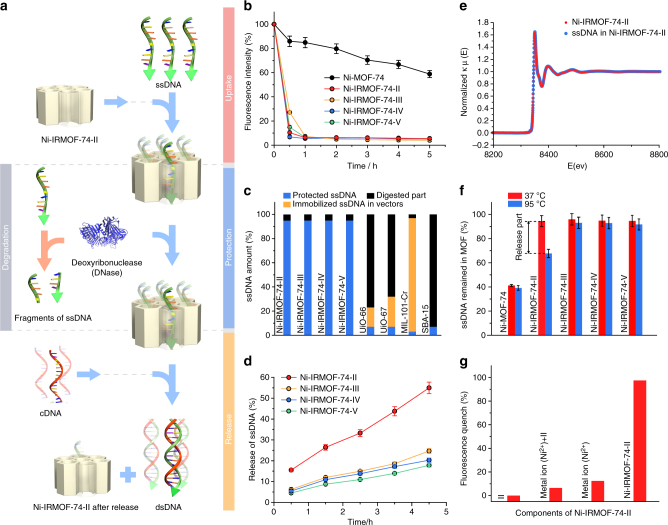Fig. 3.
Uptake, protection, and release of ssDNA using MOFs as vectors. a Illustration of three critical processes in ssDNA transfection. b Uptake of ssDNA in Ni-IRMOF-74 samples (n = 3 technical replicates; bars represent mean ± s.d.). c Protection of ssDNA using various porous materials in FBS with 10% serum. Survived portion, residual left inside the vectors and digested portion of ssDNA are labeled in blue, yellow, and red, respectively. d Release of ssDNA from Ni-IRMOF-74 samples in the presence of cDNA (n = 3 technical replicates; bars represent mean ± s.d.). e X-ray absorption spectra of Ni-IRMOF-74-II before and after loading with ssDNA, blue and red, respectively. f Experiments that rule out the possibility of H-bond between ssDNA and MOFs. Ni-IRMOF-74 samples loaded with ssDNA were heated at 37 °C and 95 °C, red and blue, respectively (n = 3 technical replicates; bars represent mean ± s.d.). g Fluorescence quench of FAM-labeled ssDNA in contact with IRMOF-74-II and its components

